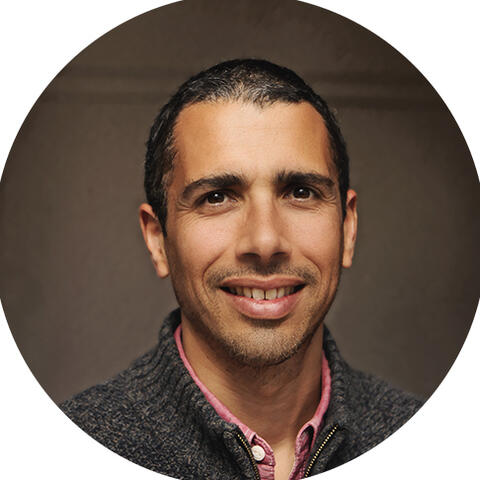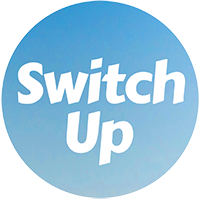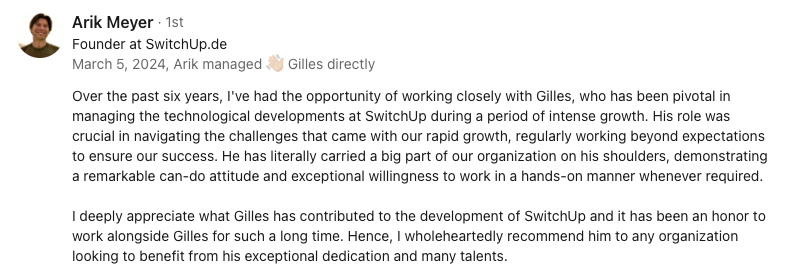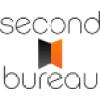Abstract:
The article advocates for building minimalist professional portfolios, emphasizing that a carefully curated selection of recent, relevant, and impactful projects is far more effective than overwhelming recruiters with every piece of work. Drawing on psychological principles and industry data, it explains that recruiters value clarity over quantity, and that too much content can signal poor judgment or lack of focus. The article provides a practical, step-by-step framework for creating a focused portfolio: identify your target audience and goals, rigorously select projects that showcase your strongest and most unique skills, and use concise, results-driven descriptions. It offers tools like self-audit checklists and frameworks (such as STAR or CAR) to help maintain a sharp, intentional narrative, and addresses how to handle career pivots or gaps with honest, succinct explanations. Distinctively, the author weaves in personal experience, noting that every time they streamlined their own portfolio—across different countries and industries—they gained clarity and authenticity, both for themselves and their audience. Ultimately, the article presents minimalism not as concealing experience, but as a way to spotlight one’s core strengths and values, making a memorable and confident impression in a crowded job market.
Minimalist portfolios have a way of standing out—often for the right reasons. When I was leading a multicultural team in Beijing, I saw firsthand how recruiters, myself included, would quickly scan through dozens of portfolios, searching for clear strengths. We rarely had time to dig through every project. Too much content was overwhelming, but a selective, well-structured portfolio made expertise obvious in just a few seconds.
I want to share why less is often more when building a professional portfolio, especially for tech professionals. I'll break down what recruiters and hiring managers really want, explain how too much content can send the wrong message, and show why quality over quantity delivers better results. Minimalist principles from psychology and design help your strongest projects shine and let your story come across clearly and memorably.
Along the way, I'll include a practical framework for building a minimalist portfolio—one I've used myself, from figuring out your audience and goals, to picking which projects to keep, to handling career pivots and gaps with honesty. I’ll also touch on how I chose no-code site builders for my own portfolio, and share a 5-step minimalist site checklist that’s helped me and my clients. If you’re hoping to land a new role, attract clients, or just focus your narrative, I hope these steps help your portfolio make the right impression—without clutter.
Why minimalist portfolios stand out
Recruiters want clarity, not clutter
Recruiters and hiring managers usually spend only a few seconds on each portfolio. According to research from The Ladders, the first scan of a resume or portfolio takes about seven seconds. When I reviewed portfolios for our Paris-based IT company, I often struggled to find relevant skills among too many outdated projects. Portfolios with three to five projects were far more effective in hiring rounds. Too much information works against you. A clear and focused portfolio makes your best work easy to spot and more likely to get noticed.
Overloaded portfolios create problems
Crowded portfolios frustrate recruiters. Overpacking can suggest poor judgment and make it harder to see your main strengths. Some common issues I’ve seen:
- Relevant skills are buried in busy layouts
- Time wasted on out-of-date or repetitive projects
- The candidate appears unfocused or unsure of their best work
When I was building my cross-border e-commerce platform in Shanghai, I learned the hard way that showing every project—no matter how minor—only made it harder for partners to see what I actually excelled at. Selective, relevant, and simple portfolios always made a stronger impression.
Why focus matters more
Why does less work better? Psychology offers an answer. Studies show that portfolios with just a few well-chosen, clearly explained projects lead to better hiring outcomes. In my own experience, focusing on three key projects helped me secure a partnership with a major logistics provider in China, while a longer, unfocused portfolio had previously gotten little response. Recruiters want quality and clarity. A focused selection lets your expertise stand out.
Too many choices, less impact
Too many choices can be overwhelming, for both creators and reviewers. Picking dinner from a gigantic menu is often more stressful than choosing from a short list. The same goes for portfolios. When you’re selective, you send a strong message about your expertise. Fewer, carefully chosen projects make it easier for others to see your strengths.
Selectivity signals expertise
A focused selection helps your work stick in someone’s mind. Presenting only your most relevant and impactful projects projects confidence and skill. I’ve found that, much like a chef remembered for just their best dishes, being known for a handful of standout projects is far more effective than listing everything you’ve ever done.
Minimalism makes you memorable
A focused, intentional portfolio is easier to remember and has a stronger effect. Reviewers remember one standout project far more than a blur of similar or weak examples. Minimalism helps you be remembered for the right reasons.
A practical framework for minimalist portfolios
Clarifying your audience and your goals
Who is your portfolio really for?Before deciding what to include, I always ask myself: who is this for? The answer shapes every choice. Hiring managers may want to see technical strengths and results. Clients may look for a range of creative solutions. Collaborators might value teamwork. By naming your primary audience, you can focus your portfolio on what matters to them.
Knowing who you’re talking to also makes it easier to set your own goals. For example, when I was aiming for a product-focused CTO role in Berlin, I highlighted projects where I had complete ownership and drove results. For freelance work, I’ve shown off versatility and adaptability. Understanding your audience helps you choose—and present—the right projects in the right way.
Aligning your portfolio with your next stepsClarifying your next goal—whether a job or new client—ensures each portfolio item supports where you’re headed. If you want to work in fintech, it’s effective to put projects showing key tech skills or domain expertise first. Your portfolio should change as your goals change, reflecting your current direction and abilities.
Keeping your portfolio up to dateA minimalist portfolio is never finished for good. Regular check-ups keep your story fresh and on point. I review my portfolio every few months, using a checklist to decide which projects still fit. Once you know your audience and goals, you can get ruthless about what stays and what goes.
Choosing what to showcase
What makes a project worth keeping?Strong minimalist portfolios use a few simple criteria. Projects should be:
- Recent: Show what you can do now
- Relevant: Match your target roles or clients
- Impactful: Demonstrate clear results or outcomes
- Unique: Highlight something special
For example, when I included a project where I introduced a new data-driven marketing strategy that increased sales by 30% for a Shanghai-based client, it stood out far more than any generic web app I’d built years earlier.
Personal touch and uniqueness also matter. If a project felt challenging or rewarding, or pushed you to learn, that can show real strengths and interests. Adding these personal notes helps your portfolio feel more real and engaging.
Why personal resonance and uniqueness matterShowcasing work that's meaningful or unusual can really set you apart. When I had to lead a mixed team of engineers and designers in Beijing, the experience brought the most growth—and it’s always one of the first projects I share. Leave out projects that don’t excite you or repeat the same effort. They rarely impress anyone reviewing your work.
Common mistakes to avoidWatch out for these pitfalls, even in an organized portfolio:
- Old or outdated tech that suggests you’re behind
- Projects with little to do with your current goals
- Cases with no clear context, making your part hard to see
A checklist helps you see if a project belongs. I ask myself:
- Does it show the skills I want to be known for?
- Is it recent and relevant?
- Is my input and its impact obvious?
If not, I archive or rework that project.
Selecting no-code site builders
When I moved to Lisbon and wanted to quickly rebuild my portfolio, I turned to no-code site builders. Here’s what I look for:
- Fast setup and easy editing
- Clean, minimalist templates
- Responsive design for mobile and desktop
- Custom domain support
- Affordable pricing
Some tools I’ve used or recommended:
- Carrd: Simple, fast, and perfect for one-page portfolios.
- Webflow: More flexible, with great design control.
- Notion: Surprisingly effective for simple, text-focused portfolios.
- Squarespace: Good for visual portfolios and easy to update.
- Does it let me launch in under a day?
- Are the templates clean and distraction-free?
- Can I update content without coding?
- Is it mobile-friendly?
- Does it fit my budget?
I’ve found that spending less time on the tech and more on the content always pays off.
Addressing career pivots and gaps with honesty
Brief, honest explanations work bestCareer shifts and gaps are normal, especially in tech. When I moved from leading an IT services company in Beijing to a CTO role in Berlin, I worried about how the gap would look. I kept my explanation short: “Transitioned to product leadership in 2021 after five years running a tech team in China.” That kept the focus on what I achieved, not the gap. Grouping similar experiences together helped create a smoother story.
Grouping experiences and focusing on skillsOrganizing your portfolio by skill or theme (rather than strict dates) helps fill gaps and highlight steady progress. Listing freelance or volunteer work under “Selected Projects” shows you stayed engaged and adaptable. This approach makes your skills the focus, not the timeline.
The emotional side of transitionsI’ll be honest: after leaving a large organization, I felt isolated and uncertain. It took months to regain confidence. Paring down my portfolio forced me to focus on what I’d actually learned and contributed, which was both humbling and empowering. Letting go of filler projects brought relief—and a sense of calm I hadn’t expected.
Balancing work and well-beingMoving to Lisbon, I realized how much my environment affected my productivity and mental health. Smaller cities, slower pace, and more time outdoors helped me find balance. Minimalism in my portfolio mirrored the simplicity I was seeking in life—less noise, more clarity.
Letting your work speak for itselfMinimalist portfolios work best when they show pivots as thoughtful steps, not mistakes. Picked carefully, quality projects let reviewers see your career as a logical path. Now, you can build a story arc that feels as real as your work.
Crafting a minimalist narrative arc
Sequencing projects to show growth and intention
How you order your projects matters. A portfolio that starts with old work and ends with your latest can show clear progression. Chronological order tracks growth over time. Grouping by theme can show off skills or focus areas. Either way, a good sequence makes your development and focus stand out quickly.
Tailoring the order for your audience also helps. Using frameworks like STAR (Situation, Task, Action, Result), CAR (Challenge, Action, Result), or Problem-Solution-Impact can make each project a clear, outcome-driven story. For example, using STAR: “Redesigned onboarding (Situation/Task), led simplification (Action), cut drop-offs by 30% (Result).”
Once the order is set, keep project descriptions short and relevant. If talking to hiring managers, highlight tech skills and results; for clients, show value and creative solutions.
- Hiring manager: “Automated deployment, cutting release time by 40%.”
- Client: “Built custom dashboard, giving real-time insights for growth.”
Writing concise, high-impact project descriptions
Each project should get about two to four sentences. Focus on context, your part, and the outcome. For example: “Redesigned checkout for an online store. Led a team to simplify navigation and add shipping estimates in real time, leading to 25% fewer abandoned carts and a 15% boost in sales over three months.”
Be clear about your role. Use:
- “Implemented new API security, lowering support requests.”
- “Worked with designers on mobile app, reaching 10,000 downloads in month one.”
Weaker descriptions are:
- “Worked on security.”
- “Helped on an app.”
Numbers and specific details always help your impact stand out.
Keep things short for clarity—don't hide details, just avoid clutter. Minimalism makes sure each word supports your story and values. A quick, honest sentence works best for explaining any career change.
Bridging gaps and transitions with minimalist storytelling
A single honest sentence does the job for transitions. Example: “In 2022, I moved to product roles to improve user experience.” This keeps the story moving and shows growth.
Highlight what you gained during the change. Transferable skills can include:
- Project management
- Working across teams
- Learning new tech quickly
Show relevant achievements, whether from typical jobs or side work, to keep your value clear. Next, see how paring down can reshape a portfolio for clarity.
Visualizing the impact of curation
From cluttered to curated—my own before/after
A busy portfolio packed with a dozen projects—many old or similar—can overwhelm any reviewer. When I first built my portfolio in Shanghai, I included every project I’d touched: twelve case studies, half of them using outdated tech. Recruiters told me it was hard to see what I actually did well.
After a ruthless curation, I cut it down to four projects: all recent, highly relevant, and clearly described. The difference was immediate. I started getting more interviews, and clients commented on how easy it was to understand my strengths.
Before curation:
- 12 projects
- Outdated tech
- Repeated content
- Vague outcomes
After curation:
- 4 projects
- Recent and on target
- Skills spotlighted
- Results explained clearly
This shift matters. According to a 2023 LinkedIn survey, 68% of recruiters say they prefer portfolios with fewer, more relevant projects. Streamlined content makes it easier for others to spot your strengths, leading to more opportunities.
Careful curation can also help change your career direction. After refining my portfolio, I successfully moved from engineering to advocacy, and later from design to fintech. Every time, focusing the portfolio made transitions clearer and more believable.
Self-audit tools and frameworks for sharper portfolios
Tools like STAR or CAR frameworks help keep stories clear and focused on results. Using them, I check if a project shows a valuable skill or result. My quick checklist:
- Is this a recent skill?
- Is the impact clear?
- Can someone see quickly what I did and why it mattered?
- Does it match the rest of my portfolio’s style?
Peer or mentor reviews, following rubrics from trusted design groups, also give useful feedback. Outside eyes often spot things we miss. Getting a peer to review my work has highlighted blind spots and helped me keep focused.
Actionable steps for building your minimalist portfolio
A practical worksheet for intentional curation
Curating a minimalist portfolio can feel tough, but a worksheet helps. Here’s my process:
- List all possible projects, case studies, and achievements.
- Score each for:
- Recency (from the last two to three years?)
- Relevance (does it match your target?)
- Impact (did it make a difference or highlight a skill?)
- Remove outdated or filler work—if it doesn’t support your story, it’s gone.
- Keep only those that fit your goals and values.
- Arrange and describe your chosen projects, checking for consistency and clarity.
- Choose a no-code builder that fits your needs (see earlier section)
- Select three to five recent, relevant, and impactful projects
- Write concise, results-focused descriptions for each project
- Use a clean, distraction-free template
- Review with a peer or mentor for clarity and focus
Minimalism isn’t erasing your history, but showing your best self. A final review with the STAR or Problem-Solution-Impact method makes sure every project tells a results-focused story.
Minimalism as self-revelation
A minimalist portfolio isn’t about hiding experience. It’s about making your best work and core values clear, supporting both your work and your own peace of mind. I still remember the anxiety I felt when I deleted half my portfolio before applying for a role in Berlin. I worried I’d look inexperienced. But the relief of letting go of outdated work was real—and seeing my core strengths stand out brought a quiet excitement. Each time I stripped away the extras, my path became clearer—to others and myself. The process always brought focus and authenticity, and reminded me that less can truly be more.
Building a minimalist portfolio is about clarity and intention, letting your best work stand out. By choosing only your most recent, relevant, and impactful projects, you help others spot your strengths quickly, without extra clutter. This approach isn’t about hiding experience, but about bringing your unique skills and growth into view. Using frameworks and checklists reduces stress, letting you focus on what counts. Minimalism brings a sense of calm and honesty to your story, making you easier to remember for the right reasons.














